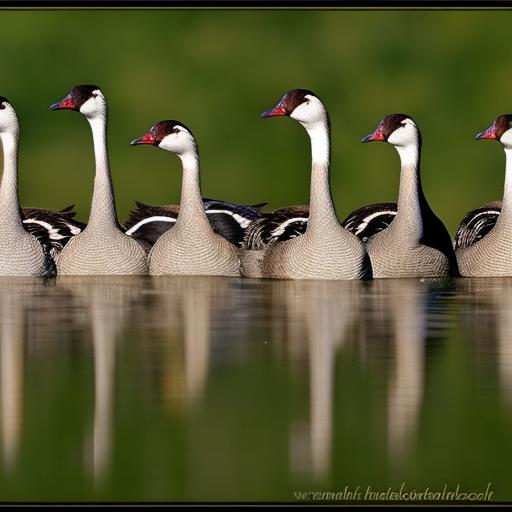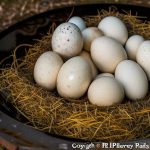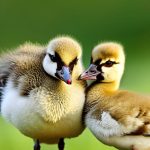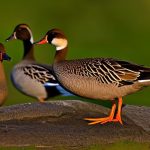Geese are a type of waterfowl that belong to the Anatidae family. They are known for their large size, long necks, and distinctive honking sound. Geese breeds come in a variety of shapes, sizes, and colors, each with its own unique characteristics. Understanding the different breeds of geese is important for those who are interested in raising them or simply appreciating their beauty.
Key Takeaways
- Geese breeds come in a variety of sizes and colors, each with their own unique features and characteristics.
- Understanding the anatomy of geese is important for identifying different breeds and understanding their behavior.
- There are many different types of geese breeds, including domesticated and wild breeds.
- The history of geese breeds dates back thousands of years, with evidence of domestication in ancient Egypt and Rome.
- Physical characteristics of geese breeds include their size, color, feather patterns, and beak shape, which can vary greatly between breeds.
Understanding the Anatomy of Geese
To fully understand geese breeds, it is important to have a basic understanding of their anatomy. Geese have a streamlined body shape that allows them to fly long distances. They have webbed feet that are adapted for swimming and walking on land. Their wings are strong and powerful, enabling them to fly at high speeds.
Understanding the anatomy of geese is crucial for those who are interested in raising them. It helps in identifying any health issues or injuries that may arise. It also allows for proper care and feeding, as different breeds may have different dietary needs.
The Different Types of Geese Breeds
There are several different types of geese breeds, each with its own unique characteristics. Domestic geese breeds are those that have been selectively bred by humans for specific traits such as size, color, or feather patterns. Wild geese breeds, on the other hand, are those that have not been domesticated and still live in their natural habitats.
Some popular domestic geese breeds include the Toulouse, Embden, and Chinese geese. These breeds are known for their large size and calm temperament. Wild geese breeds include the Canada goose, Snow goose, and Greylag goose. These breeds are known for their migratory behavior and adaptability to different environments.
The History of Geese Breeds
The domestication of geese can be traced back to ancient times. Geese were first domesticated in ancient Egypt, where they were raised for their meat, eggs, and feathers. They were also considered sacred animals and were often depicted in Egyptian art and hieroglyphics.
Geese have played an important role in different cultures throughout history. In ancient Rome, geese were kept as guard animals and were known for their loud honking, which alerted the Romans to the presence of intruders. In Chinese culture, geese are considered symbols of fidelity and are often depicted in traditional paintings and poetry.
Physical Characteristics of Geese Breeds
Geese breeds vary in size, color, and feather patterns. Domestic geese breeds are generally larger than wild geese breeds, with some reaching up to 30 pounds in weight. They come in a variety of colors, including white, gray, and brown. Some breeds have distinctive feather patterns, such as the Chinese goose with its black and white markings.
Wild geese breeds also vary in size and color. The Canada goose is one of the largest wild geese breeds, with males weighing up to 14 pounds. They have a distinctive black head and neck with a white chinstrap. The Snow goose is another wild geese breed known for its white plumage, although some individuals have a blue-gray coloration.
Geese Breeds and Their Unique Features

Each geese breed has its own unique features that set it apart from others. For example, the African goose is known for its large size and distinctive knob on its bill. The Sebastopol goose has long curly feathers that give it a unique appearance. The Pilgrim goose is one of the few breeds that can be sexed by its feather color, with males being mostly white and females being mostly gray.
Other unique features of geese breeds include their vocalizations. Different breeds have different honking sounds, ranging from high-pitched to deep and resonant. Some breeds are also known for their friendly and sociable nature, while others are more aloof and independent.
Geese Breeds and Their Behavior
Geese breeds have different behaviors depending on whether they are domestic or wild. Domestic geese breeds are generally more docile and friendly, as they have been bred for centuries to be companion animals. They are often kept as pets or for ornamental purposes.
Wild geese breeds, on the other hand, have a more instinctual behavior. They are migratory birds that travel long distances in search of food and suitable breeding grounds. They form large flocks and communicate with each other through honking sounds. They are also known for their aggressive behavior when defending their territory or young.
Geese Breeds and Their Habitat
Geese breeds have different habitat preferences depending on whether they are domestic or wild. Domestic geese breeds can adapt to a variety of environments, including farms, ponds, and even urban areas. They require access to water for swimming and bathing, as well as grassy areas for grazing.
Wild geese breeds prefer natural habitats such as wetlands, lakes, and rivers. They require open spaces for feeding and nesting, as well as access to water for swimming and bathing. Some wild geese breeds are migratory and travel long distances in search of suitable habitats throughout the year.
Raising Geese Breeds: Tips and Tricks
Raising geese breeds can be a rewarding experience, but it requires proper care and feeding. Geese need access to fresh water for swimming and bathing, as well as a balanced diet that includes grains, grasses, and vegetables. They also require shelter from extreme weather conditions and protection from predators.
It is important to provide geese with enough space to roam and graze. They are social animals that thrive in the company of others, so it is recommended to keep them in pairs or small flocks. Regular veterinary check-ups are also important to ensure their health and well-being.
Geese Breeds in Art and Culture
Geese breeds have been depicted in art and literature throughout history. In ancient Egyptian art, geese were often depicted in hieroglyphics and tomb paintings. In Chinese culture, geese are considered symbols of fidelity and are often depicted in traditional paintings and poetry.
Geese breeds have also been featured in literature, such as the famous children’s book “The Ugly Duckling” by Hans Christian Andersen. The story follows the journey of a young swan who is mistaken for an ugly duckling until he discovers his true identity.
Geese breeds come in a variety of shapes, sizes, and colors, each with its own unique characteristics. Understanding the different breeds of geese is important for those who are interested in raising them or simply appreciating their beauty. By understanding the anatomy, behavior, and habitat preferences of geese breeds, we can provide them with the proper care and feeding they need to thrive. Geese breeds have also played an important role in different cultures throughout history and have been depicted in art and literature. By learning more about geese breeds, we can gain a greater appreciation for these fascinating creatures.
If you’re interested in learning more about different breeds of geese, you might also enjoy reading this informative article on poultrywizard.com. It discusses the various breeds of geese and provides stunning photos that showcase their unique characteristics. From the majestic Toulouse to the elegant Chinese Goose, this article is a visual delight for any goose enthusiast. To check out these captivating photos and learn more about geese breeds, click here: https://poultrywizard.com/keeping-chickens/chicken-coop-portage/.
FAQs
What are geese breeds?
Geese breeds refer to the different types of geese that exist. There are over 30 breeds of geese, each with unique physical characteristics and temperaments.
What are some common geese breeds?
Some common geese breeds include the Toulouse, Embden, Chinese, African, and Canada Goose.
What do geese look like?
Geese have long necks, webbed feet, and broad, flat bills. They are typically larger than ducks and have a distinctive waddle when they walk.
What are geese used for?
Geese are used for a variety of purposes, including meat, eggs, feathers, and as pets or for ornamental purposes.
What is the lifespan of a goose?
The lifespan of a goose varies depending on the breed and living conditions, but they typically live between 10-25 years.
What is the behavior of geese?
Geese are social animals and often form strong bonds with their mates and flock members. They are also known for their protective behavior and will defend their territory and young fiercely.
What is the habitat of geese?
Geese are found in a variety of habitats, including wetlands, grasslands, and agricultural areas. They are also commonly found near bodies of water such as lakes and rivers.
What is the migration pattern of geese?
Many geese species are migratory and travel long distances each year to breed and feed. They typically follow the same routes each year and can travel thousands of miles.
Meet Walter, the feathered-friend fanatic of Florida! Nestled in the sunshine state, Walter struts through life with his feathered companions, clucking his way to happiness. With a coop that’s fancier than a five-star hotel, he’s the Don Juan of the chicken world. When he’s not teaching his hens to do the cha-cha, you’ll find him in a heated debate with his prized rooster, Sir Clucks-a-Lot. Walter’s poultry passion is no yolk; he’s the sunny-side-up guy you never knew you needed in your flock of friends!







